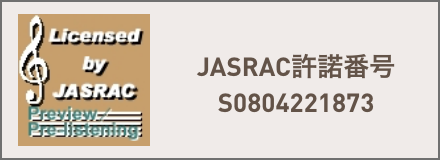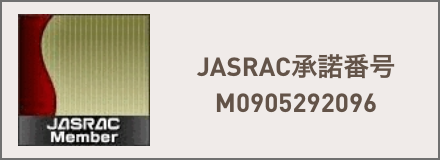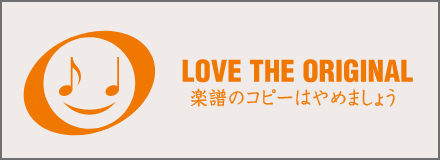12月25日15時を持ちまして、
2025年内出荷の注文受付を終了いたしました。
以降のご注文は年明け
【 2026年1月7日(水)以降順次出荷 】
となります。予めご了承ください。
本年もたくさんのご愛顧を賜りありがとうございました。
よいお年をお迎えください。
パスカル・ダンス(打楽器12重奏+ピアノ):デイヴィッド・ギリングハム [打楽器12重奏]
・1配送につき税込11,000円以上のご注文で国内送料無料
・コンビニ後払い、クレジットカード、銀行振込利用可
・[在庫あり]は営業日正午までのご注文で即日出荷
・International Shipping
- 作曲: デイヴィッド・ギリングハム
- 演奏時間:0:09:59
- グレード:4
C. Alan/CAP01850
- 概要
- 編成/曲目
- 補足
- ENGLISH
パスカル・ダンス(打楽器12重奏+ピアノ)
グレゴリオ聖歌の有名な復活祭の連唱「Victim paschali laudes」(聖書の犠牲者への賛美)の最初の2行から着想を得て作曲されました。この聖歌のモチーフとフレーズは、作品を統一するために使用されており、祈り、4つのダンス、2つの間奏曲、そして祝祷で構成されています。
仕様
- アーティスト
- 作曲: デイヴィッド・ギリングハム
- 演奏形態
- 打楽器
- 編成
- 12重奏
- 演奏時間
- 0:09:59
- グレード
- 4
- 商品形態
- アンサンブル楽譜( & Part)
- 出版社 / 品番
- シー・アラン / CAP01850
- キーワード
- オリジナル, ,
掲載商品の価格は、出版社の価格改定や為替レートなどの諸情勢により予告なく変更する場合がございますのでご了承ください。
楽器編成
- Percussion 1 (4 small concert toms, 4 congas, crash cymbals, voice)
- Percussion 2 (4 large concert toms, 4 bongos, voice)
- Percussion 3 (5 timpani, tambourine)
- Percussion 4 (crotales, snare drum, voice)
- Percussion 5 (bells, temple blocks, voice)
- Percussion 6 (chimes, 5 roto-toms, timbales)
- Percussion 7 (3-octave vibraphone, suspended cymbal, bells, voice)
- Percussion 8 (crotales [upper octave], 3-octave vibraphone, voice)
- Percussion 9 (4.3-octave marimba, xylophone, voice)
- Percussion 10 (4.3-octave marimba, voice)
- Percussion 11 (5-octave marimba, water gong)
- Percussion 12 (large tam-tam, wind chimes, inside piano, voice)
- Piano
- サイズ
- レターケースサイズ
PASCHAL DANCES:Composer: David GILLINGHAM
Dedicated to Robert Hohner and the Central Michigan University Percussion Ensemble, Paschal Dances is based on the first two lines of the famous Gregorian Easter sequence, "Victim paschali laudes" (Praises to the Paschal Victim). Motives and phrases of the chant are used to unify the work which comprises an Invocation, 4 Dances, 2 Interludes, and a Benediction.
In the opening Invocation, the first phrase of the chant tune is played by the orchestra bells and consequently, the first five notes are harmonized by the marimba. The orchestra bells play both phrases of the first line of the chant at the close of the section. Dance I, in fast tempo, is dominated by membrane instruments with interjections of the second line of the chant tune being played by keyboard instruments. The section segues into the first Interlude, characterized by bowed vibraphone and a dirgelike presentation of the first five notes of the chant in the piano. Following, in the same slow tempo, is Dance II, which features chanting of male voices in canon on each of the three phrases comprising the second line of the chant. The first phrase of the chant undergoes metamorphosis in Dance III, becoming a wholetone configuration. The dance is set in a lively 6/8 meter with periodic episodes of duplets against the triplet division. At midpoint, the dance breaks into quadruple meter with the first phrase of the chant played by the vibraphone moving in triplets. The dance returns to 6/8 meter and elides with the second Interlude, in slow tempo, where fragments of the chant are heard in the bells, chimes and marimba. Following a brief silence, Dance IV ensues with the marimbas elaborating on the wholetone motive used in Dance III. In very fast tempo, the movement climaxes on a glorious Gflat major chord, which also articulates the beginning of the Benediction. Accompanied by all mallet instruments playing the motive of the first phrase of the chant in different rhythms, the piano, along with voices, state a haunting motive derived from the second line of the chant. The work ends with three tolls of a "questioning" chord, with each articulation followed by an arpeggiated version of the chord in the upper register of the piano.
Specifications
- ARTIST
- Composer: David GILLINGHAM
- INSTRUMENTATION
- Percussion / 12 parts
- DURATION
- 0:09:59
- GRADE
- 4
- PRODUCT TYPE
- Set / ENSEMBLE ( & Part)
- PUBLISHER / Code
- C. Alan / CAP01850
- RELEASE
- OVERSEAS SHIPMENT
- EUROPEAN PARTS
- Not Included

![パスカル・ダンス(打楽器12重奏+ピアノ):デイヴィッド・ギリングハム [打楽器12重奏]](/html/upload/save_image/per.png)


